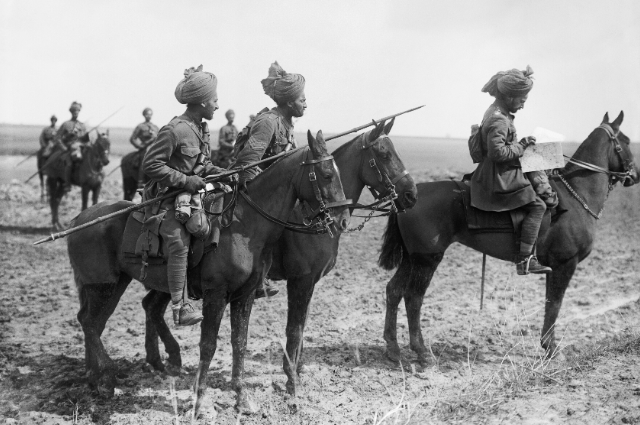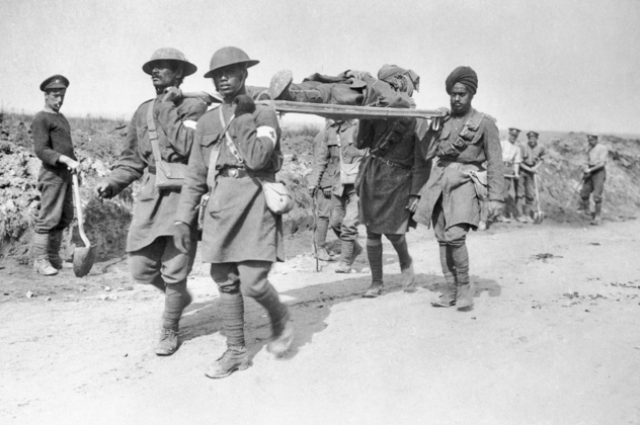History often shines its brightest spotlight on the headline-makers: the conquerors, the revolutionaries, the inventors whose names echo through time. That being said, this article brings to you, India’s untold support to the British Empire in World War I, a war fought thousands of miles away, a war which had no connection with India, yet she decided to loyally fight alongside those who made her bleed for a hundred years!
Why Britain Called on Her Colonies for Help
As World War I drew closer, Britain realised that to maintain its status as the most powerful country in the world, it needed support from its colonies. It knew that this war could become unprecedented and to sustain itself during such times, it needed manpower, resources and strategic areas. Following their policy of making and breaking promises, Britain made a new promise to its colonies that they would be given political freedom after the war if they supported it. This way, Britain was able to gather 2.5 million soldiers from its colonies with India alone contributing more than 1.3 million of them. India was one of the biggest colonies Britain had and it knew that keeping her on its side would be strategically advantageous. Indian leaders had a choice of not supporting Britain to help their freedom movement, but instead, they thought that supporting Britain would help them gain independence while still staying on the positive side of the British. The Indian National Congress passed resolutions supporting the war, expecting constitutional reforms in return. This way, India entered a war not of its choosing, driven by imperial obligation more over national interest.
India’s Massive Contribution
As stated before, Britain received the support of more than 1.3 million Hindu, Muslim and Sikh soldiers from Punjab, Uttar Pradesh, Maharashtra, Tamil Nadu, Bihar and other regions. There were also Indians who served as non-combatants (non-soldiers) who served as bakers, blacksmiths, cooks, tailors, washermen and more. These men were divided into seven expeditionary forces overseas:
1. Indian Expeditionary Force A
Number of Troops: 138,000
Region of Control: Western Front (France and Belgium)
Major Battles Fought:
- First Battle of Ypres (Belgium, 1914)
- Battle of Neuve Chapelle (France, 1915)
- Battle of Aubers Ridge (France, 1915)
- Battle of Loos (France, 1915)
- Battle of the Somme (France, 1916)
2. Indian Expeditionary Force B
Number of Troops: 8,000
Region of Control: East Africa (German East Africa, now Tanzania)
Major Battles Fought:
- Battle of Tanga (German East Africa, 1914)
- Battle of Jassin (German East Africa, 1915)
3. Indian Expeditionary Force C
Number of Troops: 4,000
Region of Control: East Africa (supporting IEFB)
Major Battles Fought:
- Battle of Tanga (German East Africa, 1914) alongside IEFB
- Battle of Jassin (German East Africa, 1915) alongside IEFB
4. Indian Expeditionary Force D
Number of Troops: 657,000
Region of Control: Mesopotamia (modern-day Iraq)
Major Battles Fought:
- Battle of Basra (Mesopotamia, 1914)
- Battle of Shaiba (Mesopotamia, 1915)
- Battle of Ctesiphon (Mesopotamia, 1915)
- Siege of Kut-al-Amara (Mesopotamia, 1915–1916)
- Fall of Baghdad (Mesopotamia, 1917)
5. Indian Expeditionary Force E
Number of Troops: 144,000
Region of Control: Egypt and Palestine
Major Battles Fought:
- Defence of the Suez Canal (Egypt, 1915)
- Battle of Romani (Sinai Peninsula, 1916)
6. Indian Expeditionary Force F
Number of Troops: 5,000-6,000
Region of Control: Gallipoli Peninsula (Ottoman Empire, modern-day Turkey)
Major Battles Fought:
- Landing at Cape Helles (Gallipoli Peninsula, 1915)
- Battle of Gully Ravine (Gallipoli, 1915)
7. Indian Expeditionary Force G
Number of Troops: 16,000
Region of Control: Persia (modern-day Iran)
Major Battles Fought:
- South Persia Campaign (1915–1918), including skirmishes near Bushire and Kerman
74,000 died, 65,000 were wounded and 10,000 went missing, all for a war which had no relation with India. Besides soldiers, India also supplied more than 170,000 animals, including horses, camels, bullocks, etc. and 3.7 million tons of supplies, including rice, flour, tea, biscuits, jute for sandbags, firewood, etc.; the total value of supplies was £34.4 million at that time. India also contributed £146.2 million from its revenues, equivalent to around £14 billion today. Additionally, India also provided a loan of £100 million to the British government, which hasn’t been paid back to this date.
In short words, India supported the British Empire as if it were its ally. India’s contribution touched almost all fronts of the war. Many prominent British officials and King George V himself acknowledged India’s immense contributions, even labelling India as the ‘Jewel in the Crown of the British Empire.’ However, when they had to reflect on this in the aftermath of the war, the time for breaking their promise had come.
Aftermath and a Broken Promise
After WWI ended, the British Empire awarded thousands of Indian sepoys for their services. As per documented sources,
- 11 soldiers received the highest military honour, the Victoria Cross
- 5 soldiers received the Military Cross
- 973 soldiers received the Indian Order of Merit (IOM)
- 3,130 soldiers received the Indian Distinguished Service Medal (IDSM)
But what about those tens of thousands killed in action? What of those who went missing and never returned home? What of the large economic support India gave?
The great British Empire broke the only promise based on which Indian leaders supported their call for war; the only promise of giving Dominion status to India, the only promise of guaranteeing freedom after the war. While there were other small promises made as well, most of them were never fulfilled, and the rest were delivered in highly diluted forms, such as:
- The Government of India Act was passed in 1919 which allowed Indians to have control of small ministries like Health, Agriculture and Education, while key fields like Military, Finance and Law, required to run the country, remained with the British Empire.
- As mentioned earlier, the £100 million loan was never repaid. Instead, India had to face inflation, food shortages and economic hurdles due to the repercussions of a war they were unnecessarily dragged into.
- The million soldiers, now war veterans, were given no compensation or recognition at all. This fueled many of them to become freedom fighters in the coming years.
India’s contribution in WWI, driven by duty, loyalty and a hope that her sacrifices would earn them much-awaited freedom, is a part of history often overlooked. Millions of Indians fought in unknown lands, in challenging climates and against unknown enemies, only to never get recognition from the British. To this date, Britain tries to hide what this article sheds light on, a Forgotten Legacy and a reminder to the world that remembrance must go beyond monuments. It must include the voices that never made it home.


